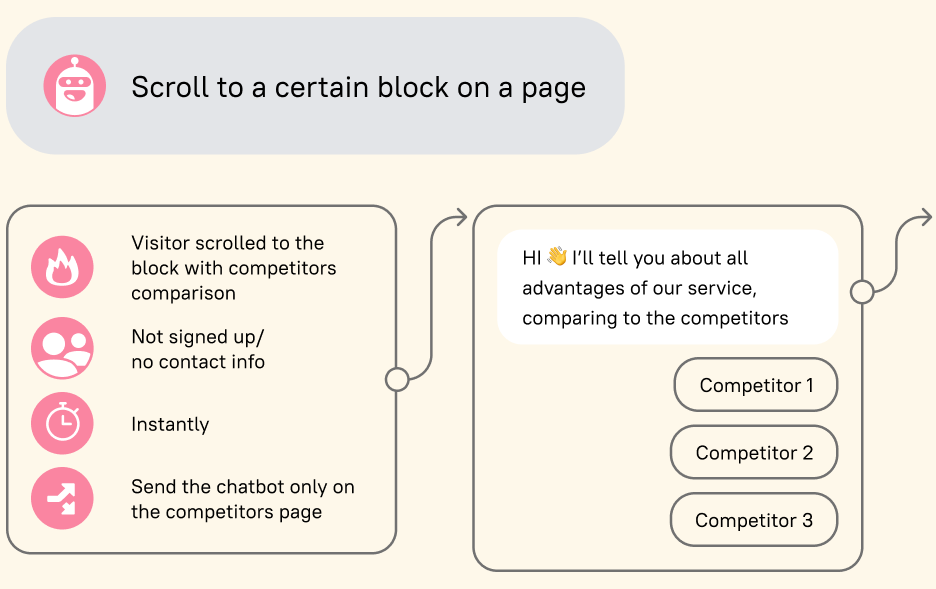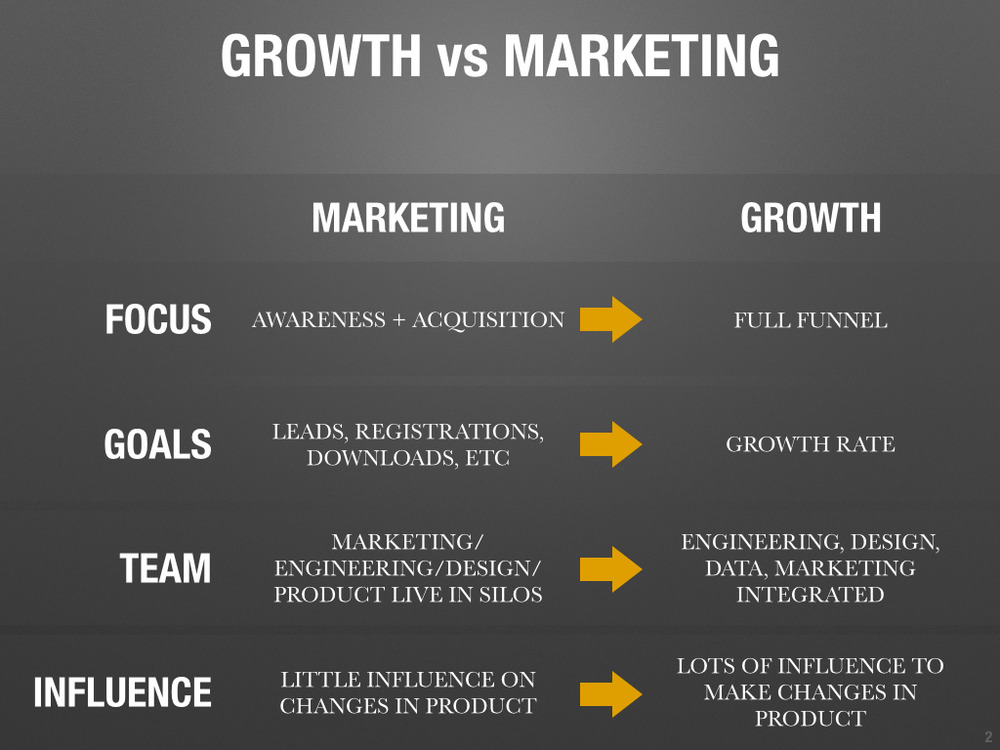Building growth team: 3 rules and 5 must-have roles
Discover the secrets of rapid business growth from a growth marketing expert. What people to hire, how to manage a team, launch experiments, what tools to use, and a list of proven examples to inspire you.

Part 1: Guide to growth marketing explained by a growth hacker
Part 3: Guide to hacking your product led growth marketing
Part 4: 3 rules and 5 must-have roles when building growth team
Part 5: How to produce growth hypotheses
Part 6: Your growth marketing strategy template, guide, and examples
Part 10: A secret collection of growth marketing tools
Part 12: 25 Growth Marketing Books
In Dashly, we know how hard it can be to launch a growth marketing team. After multiple ups and downs, it is the fifth year when my teammates has practiced growth marketing. Finally, we’re ready to share with you this experience.
In this article, you’ll find best practices, typical mistakes, and rules to follow when building a growth department.
The six growth pillars
To start on the road to successful customer led growth marketing strategy one’s business should stick to a comprehensive and holistic approach — you gotta start somewhere. Systemizing things makes the process easier, sticking to a certain strategy gives a kick to your own ideas, and focusing on the core points reduces the amount of work the department has to do. So we wanted to emphasize the importance of the six essentials, so-called pillars of growth. These pillars include:
- product and market analysis,
- data-driven decision-making,
- experimentation,
- scalability,
- customer retention,
- continuous improvement.
One of the key growth pillars is to analyze the existing market and your product in-depth to understand the customer base’s needs and preferences. This knowledge can help identify relevant target demographics, allowing you to modify your product to meet the customer’s specific expectations, leading to better market penetration.
Data is also a crucial pillar in growth marketing. Effective data management and analysis help businesses make informed decisions, allowing them to optimize their strategies and campaigns to achieve better engagement, increased conversion rates, and improved ROI.
18 business growth experts you should follow this year

What are Growth Loops? How It Can Scale Your Company

Product Led Growth Marketing: hack your product growth

The third pillar, experimentation, is crucial for any successful growth marketing strategy. Experiments enables businesses to test new ideas, measure their success and identify which strategies work best. Through an iterative process, businesses can ultimately improve their marketing efforts via a more thorough understanding of what works and what doesn’t.
As businesses grow, they must focus on scalability, the fourth essential growth pillar. A scalable growth marketing approach allows businesses to quickly and efficiently adjust to increased demand, expanding their reach without sacrificing customer satisfaction.
The fifth pillar, retaining customers, is often overlooked but is at core of achieving long-term success in growth marketing. Retaining existing customers through personalized customer experiences, loyal incentives programs, and premium services helps businesses to reduce churn rates, increase customer lifetime value, and ultimately improve profitability in the long-term.
Finally, businesses must embrace the sixth growth pillar, continuous improvement, by constantly assessing and refining their marketing strategies. Continuously reviewing data, testing and refining campaigns, and adapting to changes in the market are essential for staying ahead of competitors and maintaining steady growth.
All in all, a good strategy requires a customer-focused approach that considers those essential elements of growth. We focused on these growth pillars as well and kept the theory in mind while applying it to practice, which took us some time and quite a lot of effort — more on that below!

Get your free example of growth marketing playbook with 40+ templates for successful experiments
3 rules to launch a growth hacking team on the first try
We didn’t manage to build a growth team on our first attempt, even equipped with all that theory (a bummer, right). After numerous mistakes analysis we tried again. And this time it worked out!
Here are insights we discovered. Mind them to when building a growth hack department.
1. You need a separate team work on marketing growth tasks systematically.
In our first growth department, there were two people. We tried to combine growth tasks with others (i.e. marketing, design, sales.) Unfortunately, it didn’t work out.
The growth team needed much more time for growth marketing test. Just compare the scale of work within growth team vs marketing team:

Thus, after testing 10 hypotheses in 2 months, it fell apart.
2. Focus on a single key metric.
The first growth managers in Dashly tested various SaaS growth hacks chaotically at different funnel stages and was not focused on a key metric.
As a result, the team had poor changes in product metrics framework KPIs. Sure thing, it did not motivate the team. Marketers needed more work to understand which growth hypothesis worked and which did not.
3. Involve experts.
Our second try to establish growth department workflow was based on involving third-party expertise. To quickly achieve the set goals, we immediately decided to learn from an expert in growth marketing — Antony from Growth Academy.
He helped quickly debug processes in our growth processes and achieve the results mentioned above.
For more insights and inspo for your strategy, subscribe for a growth marketing newsletter.
How to set growth marketing goals [free template]
It is a working template that we use to set targets for Dashly growth hackers.

1. Determine one key growth metric for your company.
Your global goal is likely to increase revenue. Many metrics influence its achievement, and it’s unlikely that the growth experts will be able to work with each of them.
Instead, choose those growth marketing metrics with the most significant impact on revenue and assign them to the team.
The key metric should be close to money — affecting the company’s financial results. This way, you can prove the benefits of growth marketing and get more people, time, and money for tests.
Read also: Growth marketing vs performance marketing.
2. Align the chosen metric with the capabilities of the growth team.
You must ensure the team can genuinely influence the selected metrics and has the necessary resources.
Example: The growth team needs to change the onboarding process to influence active users retention of the product. At the very least, a developer is required. They should either be part of the growth team or have time allocated from another team’s developer.
Also read:
3. Determine the success criteria.
How much should the metric grow due to the team’s work? The goal should be ambitious but achievable and recorded in your growth hacking canvas.
At the beginning of each year, we set strategic goals for the entire Dashly team within the framework of OKR. Then we determine how each team can contribute to their achievement.
At the beginning of 2021, we set a very ambitious revenue goal. To achieve it, we needed to increase sales of the Dashly expert team*. This is what the growth team focused on.
As a result, the key metrics for the team became:
– the number of requests for a service demonstration;
– the number of conducted demonstrations;
– the number of closed deals.
Dmitrii Ive, Dashly CEO and co-founder
Dashly growth marketing team consists of a team-lead, copywriter, designer, layout designer, and analyst. They help companies integrate Dashly tools and increase conversion on the website.
The manager comes up with ways to achieve the client’s goals and, together with the team, develops, tests, and implements triggered mechanics. By selling this service, rather than just a subscription to our service, we help clients achieve their goals faster and without expanding their staff.
So if you don’t have time for experiments, you can turn to great growth marketing services.
Your team needs some inspo for growth experiments? We’re ready to help 😉
Must have picks for your new marketing department
The growth department at Dashly is a marketing one mostly because it is focused on attracting targeted leads. However, growth teams can also be of other types, such as product teams. It all depends on the objectives you want to achieve, hacking growth of your company.
To launch a marketing growth team, you need to fill 5 roles:
- marketer,
- scrum master,
- PPC specialist,
- designer,
- analyst.
The marketer looks for insights on which to generate hypotheses, look for growth marketing tips, test channels, frameworks, and formulate offers.
By the way, if you need inspo for your further experiments, check out our growth marketing playbook with over 40 ideas for testing from Dashly and our customers.
The scrum master is responsible for processes, “pushes” them to maintain pace, helps understand what is blocking launches, and conducts brainstorming sessions and all other teams activities.
The PPC specialist launches advertising campaigns in various channels: Facebook, Instagram, TikTok, and Google Ads. They can use various social media growth hacking tools in their work: automate lead generation, collect data about user preferences, etc.
The designer creates visuals and helps with the design of landing pages. What people see when they visit your website can affect the campaign success drastically, and that give you something to learn from.
Read also: 25 Growth Marketing Books to Skyrocket Success
The analyst helps monitor key metrics, collects statistics before launching hypotheses, and calculates the sample size and test duration.
You don’t necessarily need to find a growth hacker for your startup (or bigger business) in the market. Think over growth hacking teams structure by choosing from those who already work in the company and have the appropriate skills. One person can combine several functions in the growth teams.
For example, a marketer can handle advertising launches and even create visuals independently — two birds with one stone for your growth marketing structure.
I didn’t immediately become the team leader of our growth team. I joined Dashly 2 years ago and started by working on our email newsletters.
Gradually, my task list expanded significantly, and I started conducting user research and mastering other marketing channels besides email.
Then, when we began launching the growth team, our CEO Dmitrii Ive and I decided that my place was in it as a team lead. I develop in every possible way. For example, I took courses to find new approaches to generating demand and exchange best practices with people with similar experiences.
The main participants of the marketing teams should work in it full-time. In our case, they are:
- marketer (also the growth leader — responsible for interacting with other teams and directing the team overall);
- scrum master;
- two PPC specialists.
The rest of the employees can be “borrowed” from other teams for half a workday.
Read also: Your Growth Marketing Strategy Template with guide and examples
The main thing is to borrow specialists of the same specialization which you want them to fit in the growth hacking team structure. You can invite a designer from another department to design creatives, but you should not ask a project executive for this. This specialist will focus on their projects and need to pay more attention to your marketing growth strategy.
We share a designer and analyst with the marketing department, of which the growth team is a part.
To launch a product growth team, you need to fill 4 positions:
- product manager,
- product designer,
- developer,
- analyst.
The product manager comes up with which features that can be quickly implemented to bring tangible results in the growth of the key metric.
The product designer comes up with how to visualize the idea with minimal changes to the current version of the product.
The developer makes changes to the product or website.
The analyst helps monitor key metrics, collects statistics before launching hypotheses, and calculates the sample size and test duration.
But if you want your company to stand out among the competitors, shape the product growth team in the Product-Led Growth Marketing approach.
Thanks! Here’s your copy of 100 growth ideas

Let’s recap
How to launch a growth marketing team?
- To systematically work on growth, you need a separate team.
- The growth team should focus on a single key metric.
- If you need help setting up department workflow, involve experts.
How to set its goals?
- Determine which metric your company should grow quickly first. The metric should be close to the money.
- Relate the chosen metric to the capabilities of the growth team.
- Define the success criterion.
Which positions need to be filled to launch a growth team?
You need to fill 5 positions:
- marketer,
- scrum master,
- PPC specialist,
- designer,
- analyst.
To launch a product growth team, you need to fill 4 positions:
- product manager,
- product designer,
- developer,
- analyst.
Can’t wait to test your first hypothesis? We want to be a part of it!
Launch marketing experiments on your website with Dashly
- Test different communication tactics;
- Collect website and user data to measure success.

FAQ
What is a growth marketing team?
It is a cross-functional team of growth experts, including marketers, PM, growth engineers, analysts, and data scientists, who are all focused on one common objective: driving and sustaining brand growth. Their goal is to identify and execute experiments on innovative marketing strategies and tactics that help acquire and retain users and increase revenue.
Why build a growth hacking team?
In terms of business benefits a growth marketers:
- focuses solely on driving sustainable growth,
- experiments and learns from successes and failures,
- brings together cross-functional skills for collaboration,
- data-driven decisions are emphasized by growth teams,
- creates a competitive advantage and stays ahead of the competition.
Growth team vs marketing team: what’s the difference?
Both concepts are crucial for any business to thrive and succeed. However, they have distinct differences in terms of their intentions, methods, and outcomes.
Marketing is about promoting your products or services to potential customers. This can include a variety of tactics such as advertising, public relations, social media, and more. The main goal of marketing is to create awareness, generate leads, and ultimately increase revenue for your business.
Read more: RevOps vs Sales Ops.
Growth is a broader approach. To achieve sustainable, long-term success, you need to leverage brand affinity, improve customer experience, develop new products or services, enter new markets, and so much more. The goal of growth is to create value for your brand by increasing revenue, profitability, market share, and customer loyalty.
What roles make up the ideal growth department?
The roles that make up an ideal growth team can vary depending on the company, but generally include a growth lead, product executive, marketer, analyst, and developer. These roles bring together skills in strategy, product development, marketing, analytics, and technical expertise to work collaboratively towards achieving the absolute goal.
Where should your focus lie?
Growth teams should focus on identifying and testing product or marketing hypotheses that can lead to sustainable growth for the business. This includes experiments with different strategies, analyzing data to make informed decisions, collaborating cross-functionally, and constantly iterating to achieve desired improvement of the marketing funnel stage: increase leads, active users, long-term retention, etc.
I’m going to build or join a growth team! What things should I expect?
As a member of a growth team, you should expect to work on a range of tasks related to acquisition, activation, retaining leads, revenue, and referral — collectively known as the AARRR framework. You will collaborate with other teams in the pursuit of rapid experiments and iteration in the search of scalable growth opportunities for the product or business. You should also expect to measure and report on your progress regularly, and be comfortable with data-driven decision-making.
Where should the growth team sit?
The growth team should ideally sit at the intersection of marketing, product, and engineering, with the absolute goal of driving sustainable growth for the business through cross-functional collaboration and experiments.
Should you have more than one growth marketing department?
Yes, depending on the size and complexity of the business, you may need multiple growth teams focused on different areas such as acquisition and retention of users, or revenue. Having multiple growth teams allows for more specialized focus and faster experiments completion. However, it’s important to ensure that each team has clear objectives and responsibilities to avoid duplication of efforts and confusion.
How is the success of growth experts measured?
The success of growth teams is generally measured by key performance indicators (KPIs) such as user acquisition, conversion rates, retention rates, sales, revenue generated, and referral rates. These metrics are often specific to the business and its growth goals, and are regularly monitored and reported on to make data-driven decisions and iterate on growth strategies.
How to leverage marketing automation for growth teams?
Automation for repetitive tasks can save a lot of time and improve productivity. Examples of such tasks include email drip campaigns, lead scoring, and social media posting. And remember growth pillars? Let’s apply some theory here as well:
- Start with a clear strategy: analyzing the existing tools can help you find relevant ones. Check out our list of growth hacking tools to start with.
- Focus on retaining customers: here comes personalized messaging!
- Refine your strategy: do experiments and monitor key metrics such as open rates, click-through rates, and conversion rates to identify what’s working and what’s not.
Read also:
- Deep dive into growth marketing analytics with Dashly experts
- 22 SaaS growth hack Facebook tactics to boost your business
- Skyrocket your company revenue with a complete guide to RevOps Revenue Operations
- B2B growth marketing: accelerating business success
- Demand Generation vs Growth Marketing: Where to focus?
- Growth marketing framework: Battle-tested insights from Dashly experts
![13 growth hacking examples tested by Dashly experts [+46 free templates]](https://www.dashly.io/blog/wp-content/uploads/2023/05/Growth-hacking-examples-to-inspire-your-team-720x317.png)








![25 growth hacking books [recommended by Dashly growth hackers]](https://www.dashly.io/blog/wp-content/uploads/2023/05/Growth-Hacking-Books-720x317.png)


